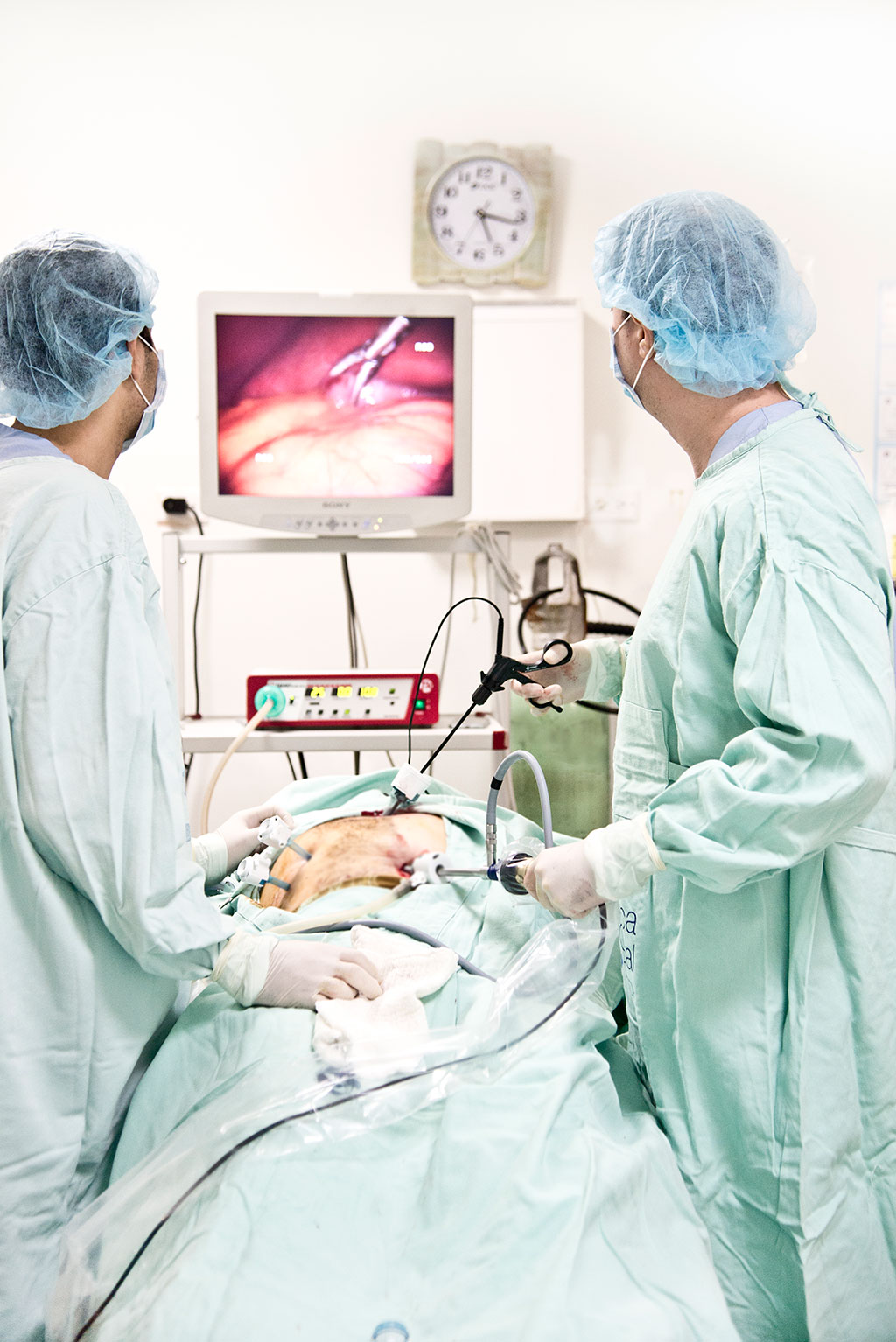Global Endoscopic Imaging Systems Market Driven by Increasing Adoption of AI and Minimally Invasive Procedures
|
By HospiMedica International staff writers Posted on 01 Nov 2022 |

The endoscopic imaging systems market is an established market and has witnessed significant advancements over the past few years. The global endoscopic imaging systems market was valued at USD 3.64 billion in 2021 and is expected to grow at a CAGR of 7.43% during the forecast period 2022-2030 to reach USD 6.94 billion by 2030. The market growth is likely to come on the back of the growing adoption of minimally invasive procedures, improving clinical quality of endoscopic procedures, and increasing technology integration in endoscopic imaging systems.
These are the latest findings of Research and Markets (Dublin, Ireland), a market research firm.
The COVID-19 pandemic was an unprecedented event to affect the global healthcare system. Healthcare systems in various economies collapsed, and technology integration skyrocketed. Endoscopic procedures were impacted similarly during the initial phase of the pandemic. Several non-emergency procedures were delayed or canceled in order to minimize infection risk during the early months of 2020. Similar to other medical specialties, the adoption rate of endoscopic imaging systems was also negatively impacted. The limited demand for new devices, high costs of endoscopic imaging systems, and supply chain disruptions hampered production and sales of endoscopic imaging systems, particularly during the peak of the pandemic in 2020.
However, during the forecast period 2022-2030, the adoption rate of endoscopic imaging systems is expected to normalize to the pre-COVID-19 levels. The allocation of funds for purchasing new devices and the pace of procurement decisions will be the key factors to impact the device adoption rates. The increasing demand for minimally invasive procedures will propel advancements in endoscopy and improve its adoption among end users such as physicians. The adoption of artificial intelligence (AI) in endoscopic procedures and the entry of local companies in the regional endoscopic imaging systems market will offer significant growth opportunities in the global endoscopic imaging systems market. Moreover, the increasing demand in developing regions will also provide an opportunity for market growth. Based on application, the diagnostic endoscopic imaging systems segment is expected to dominate the global endoscopic imaging systems market during the forecast period 2022-2030.
Related Links:
Research and Markets
Latest Business News
- Expanded Collaboration to Transform OR Technology Through AI and Automation
- Becton Dickinson to Spin Out Biosciences and Diagnostic Solutions Business
- Boston Scientific Acquires Medical Device Company SoniVie
- 2026 World Hospital Congress to be Held in Seoul
- Teleflex to Acquire BIOTRONIK’s Vascular Intervention Business
- Philips and Mass General Brigham Collaborate on Improving Patient Care with Live AI-Powered Insights
- Arab Health 2025 Celebrates Landmark 50th Edition
- Boston Scientific Acquires Medical Device Company Intera Oncology
- MEDICA 2024 to Highlight Hot Topics of MedTech Industry
- Start-Ups To Once Again Play Starring Role at MEDICA 2024
- Boston Scientific to Acquire AFib Ablation Company Cortex
- Hologic Acquires Gynesonics to Strengthen Existing Gynecological Surgical Business
- Smith+Nephew and JointVue Partner on Ultrasound Preoperative Planning in Robotics-Assisted Surgery
- Stryker Completes Acquisition of NICO Corporation
- BD Completes Acquisition of Critical Care from Edwards Lifesciences
- ZOLL to Acquire Vyaire Medical’s Ventilator Business
Channels
Critical Care
view channel
Ingestible Smart Capsule for Chemical Sensing in the Gut Moves Closer to Market
Intestinal gases are associated with several health conditions, including colon cancer, irritable bowel syndrome, and inflammatory bowel disease, and they have the potential to serve as crucial biomarkers... Read moreNovel Cannula Delivery System Enables Targeted Delivery of Imaging Agents and Drugs
Multiphoton microscopy has become an invaluable tool in neuroscience, allowing researchers to observe brain activity in real time with high-resolution imaging. A crucial aspect of many multiphoton microscopy... Read more
Novel Intrabronchial Method Delivers Cell Therapies in Critically Ill Patients on External Lung Support
Until now, administering cell therapies to patients on extracorporeal membrane oxygenation (ECMO)—a life-support system typically used for severe lung failure—has been nearly impossible.... Read moreSurgical Techniques
view channel
Pioneering Sutureless Coronary Bypass Technology to Eliminate Open-Chest Procedures
In patients with coronary artery disease, certain blood vessels may be narrowed or blocked, requiring a stent or a bypass (also known as diversion) to restore blood flow to the heart. Bypass surgeries... Read more
Intravascular Imaging for Guiding Stent Implantation Ensures Safer Stenting Procedures
Patients diagnosed with coronary artery disease, which is caused by plaque accumulation within the arteries leading to chest pain, shortness of breath, and potential heart attacks, frequently undergo percutaneous... Read more
World's First AI Surgical Guidance Platform Allows Surgeons to Measure Success in Real-Time
Surgeons have always faced challenges in measuring their progress toward surgical goals during procedures. Traditionally, obtaining measurements required stepping out of the sterile environment to perform... Read morePatient Care
view channel
Portable Biosensor Platform to Reduce Hospital-Acquired Infections
Approximately 4 million patients in the European Union acquire healthcare-associated infections (HAIs) or nosocomial infections each year, with around 37,000 deaths directly resulting from these infections,... Read moreFirst-Of-Its-Kind Portable Germicidal Light Technology Disinfects High-Touch Clinical Surfaces in Seconds
Reducing healthcare-acquired infections (HAIs) remains a pressing issue within global healthcare systems. In the United States alone, 1.7 million patients contract HAIs annually, leading to approximately... Read more
Surgical Capacity Optimization Solution Helps Hospitals Boost OR Utilization
An innovative solution has the capability to transform surgical capacity utilization by targeting the root cause of surgical block time inefficiencies. Fujitsu Limited’s (Tokyo, Japan) Surgical Capacity... Read more
Game-Changing Innovation in Surgical Instrument Sterilization Significantly Improves OR Throughput
A groundbreaking innovation enables hospitals to significantly improve instrument processing time and throughput in operating rooms (ORs) and sterile processing departments. Turbett Surgical, Inc.... Read moreHealth IT
view channel
Printable Molecule-Selective Nanoparticles Enable Mass Production of Wearable Biosensors
The future of medicine is likely to focus on the personalization of healthcare—understanding exactly what an individual requires and delivering the appropriate combination of nutrients, metabolites, and... Read more















